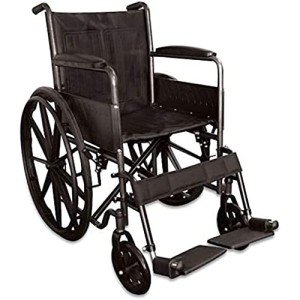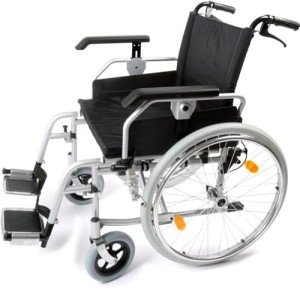
6
апреля13 Things About Bariatric Living Aids You May Not Have Known
bariatric wheel chair Living Aids
Bariatric (obese) patients need sturdy mobility aids to help them keep self-reliance. Utilizing undersized equipment increases staff strain and threats injuries to both the patient and caregiver.
Guarantee that equipment is effectively sized by conducting home assessments. Expand corridors, doors, and ramps if required for bariatric equipment to safely access homes.
Walking Aids
Walking aids are bariatric mobility equipment advised by a doctor or physiotherapist to maintain your self-reliance and assist you recover from injuries, surgery or pain. They are likewise utilized long term for individuals with muscle weakness or balance issues. They are readily available in a variety of types to satisfy your requirements including, canes, rollators and walkers for greater stability.
Physiotherapists are the most qualified to evaluate your requirements and prescribe the finest walking help for you. This evaluation consists of an evaluation of your practical status, everyday mobility requirements (e.g. navigating thresholds, public transport) and your danger factors for falls such as cardiovascular, musculoskeletal and neurological.
A great physio therapist will be able to provide the ideal bariatric walking aid for you, which consists of a suitable prescription based upon your height, weight and health care plan together with a detailed rehab program. This will optimise your recovery and decrease the risk of future injury.
bariatric wheelchairs uk medical equipment such as bariatric walking canes, commodes, shower chairs and wheelchairs are designed to accommodate bigger patients who require mobility help. Often standard medical items can not support the added weight and so should be customized with extra bracing to guarantee that they are safe to utilize. This modification is an essential step to assist people with obesity feel more positive about living separately in their own homes, and it can likewise make their experience at hospital and other medical facilities more manageable by minimizing the possibility of them being rejected for admission or treatment due to an absence of sufficient mobility equipment.
Crutches
Crutches are an efficient bariatric transport wheelchair 400 lb capacity living help for people who require support while walking. They take weight off of one leg and allow the user to press through their hands rather than their knees or feet, assisting them to move quicker and more effectively than they would have the ability to do otherwise. They likewise assist to prevent pressure on the hurt knee or foot, which can lead to further pain and discomfort.
 When utilizing crutches, it is essential to place them properly so that the hand grips are 1 to 2 inches listed below the elbow when in a relaxed armpit position. Similarly, the axillary pad ought to rest against the client's chest directly above their elbow, rather than extending down past their underarm. This will enable the user to keep their hands free for balance and control.
When utilizing crutches, it is essential to place them properly so that the hand grips are 1 to 2 inches listed below the elbow when in a relaxed armpit position. Similarly, the axillary pad ought to rest against the client's chest directly above their elbow, rather than extending down past their underarm. This will enable the user to keep their hands free for balance and control.
Patients need to always mosey and thoroughly while utilizing crutches to avoid falls. They should prevent steep or icy slopes and keep the crutches clear of blockages such as poles and stair railings. They should likewise ensure that they are not leaning on the suggestions of their crutches, which can cause them to fall over or divert off in a direction suddenly. It is recommended that patients utilize crutches in pairs so that they can help to stable one another if required.
To rise stairs, the client must stand near the top of the step and hold the handrail for assistance. They ought to then bring their crutches to the next step below them and position their foot on it before moving forward. They need to then duplicate the procedure of moving down each step. Alternatively, the patient might have the ability to ascend and come down stairs by leaning on the chair arm of a steady chair.
Numerous doctors recommend crutches to their clients after an injury or surgical treatment. Nevertheless, if you are not comfortable with them or feel that they do not supply sufficient stability or support, consult your doctor to discuss alternatives. For example, you may be able to try a walking stick rather of crutches or a wheelchair bariatric transit 24 inch if your doctor feels that it will be better for your scenario.
Commodes
Commodes are a great bariatric wheelchair 26 inch seat living help that supplies patients with toileting self-reliance. Carers can help their clients move to the commode, and then leave the room, supplying personal privacy and lowering tension and anxiety for clients who battle with going to the restroom by themselves.
Basically, a commode is a chair with a cutout in the seat that serves as a toilet. Many have actually a pot connected under the cutout that acts as a collection container for waste. The commode can be utilized as a standalone toilet or over an existing one, and lots of have removable legs to allow it to fold flat for storage. There are several types of bedside commodes available, and some might be covered by insurance, so it's important to contact your health care provider and insurer.
Shower Chairs
For individuals who are unable to stand for extended periods, entering and out of the bath tub can be tough. Falling while trying to shower can lead to severe injuries and discomfort. Shower chairs, likewise understood as bath chairs, are a bariatric living aid that can assist prevent falls and make bathing more secure.
There are a variety of shower chairs to fit the needs of different people. For instance, a basic shower chair with or without back can support as much as 300 pounds while swivel models permit users to being in the tub and orient themselves in a position to reach the shower knobs, soap, and so on. Some shower chairs can likewise be rolled over the toilet to function as a commode seat and are readily available with or without arms.
 When selecting a shower chair, it is very important to take measurements of the area and tub to guarantee that the chair will have the ability to fit properly. Additionally, some individuals find it handy to put non-slip shower mats both inside and outside of the shower to help keep the chair from sliding, especially if water gets on the floor.
When selecting a shower chair, it is very important to take measurements of the area and tub to guarantee that the chair will have the ability to fit properly. Additionally, some individuals find it handy to put non-slip shower mats both inside and outside of the shower to help keep the chair from sliding, especially if water gets on the floor.
Many people who use shower chairs discover that they can be more comfy while sitting in them than on a bath stool, which can be more uncomfortable for extended periods of time and might not have an adjustable height setting. However, a shower stool can still be useful for individuals who are able to get in and out of the tub with relative ease and are just looking for some extra stability while bathing.
Individuals who wish to purchase a shower chair will need to have a doctor write a prescription for it and possibly work with their Medicare Advantage plan or private insurer to see if they can get protection for the item. Sometimes, an individual who has considerable mobility concerns may be able to have the shower chair covered by Medicaid. If that's the case, the individual needs to talk with their state Medicaid company to determine what the rules and regulations are for that location.
Отзывы